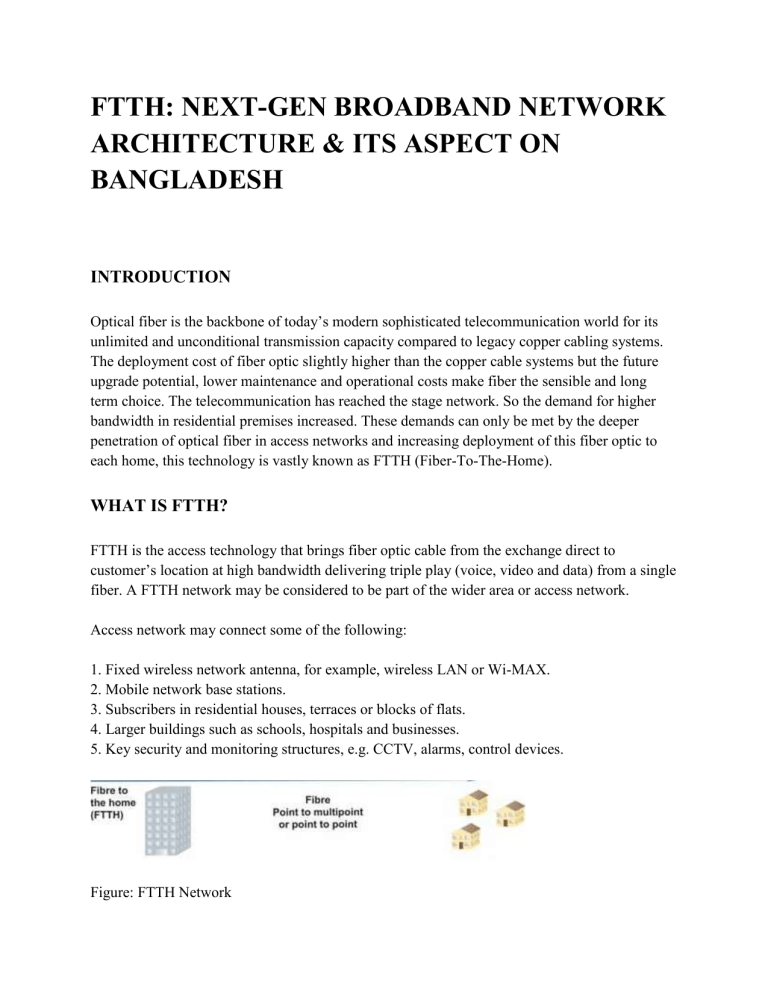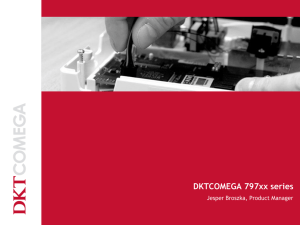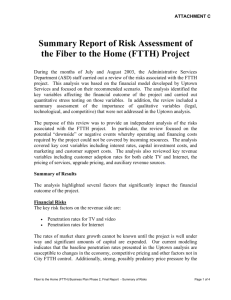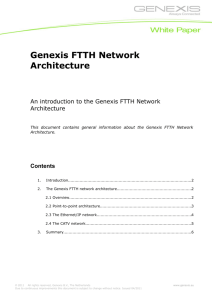ftth in bangladesh

FTTH: NEXT-GEN BROADBAND NETWORK
ARCHITECTURE & ITS ASPECT ON
BANGLADESH
INTRODUCTION
Optical fiber is the backbone of today’s modern sophisticated telecommunication world for its unlimited and unconditional transmission capacity compared to legacy copper cabling systems.
The deployment cost of fiber optic slightly higher than the copper cable systems but the future upgrade potential, lower maintenance and operational costs make fiber the sensible and long term choice. The telecommunication has reached the stage network. So the demand for higher bandwidth in residential premises increased. These demands can only be met by the deeper penetration of optical fiber in access networks and increasing deployment of this fiber optic to each home, this technology is vastly known as FTTH (Fiber-To-The-Home).
WHAT IS FTTH?
FTTH is the access technology that brings fiber optic cable from the exchange direct to customer’s location at high bandwidth delivering triple play (voice, video and data) from a single fiber. A FTTH network may be considered to be part of the wider area or access network.
Access network may connect some of the following:
1. Fixed wireless network antenna, for example, wireless LAN or Wi-MAX.
2. Mobile network base stations.
3. Subscribers in residential houses, terraces or blocks of flats.
4. Larger buildings such as schools, hospitals and businesses.
5. Key security and monitoring structures, e.g. CCTV, alarms, control devices.
Figure: FTTH Network
FTTH WITH GPON TECHNOLOGY
FTTH actually uses Giga Passive Optical Network (GPON) technology for its access network design. GPON is an architecture which uses optical transmission system designed to carry signals via fiber optical cable from the central office directly to end users such as businesses and multi dwelling units. Passive means that there is no active or powered element in between the exchange and the customer’s location. GPON is high bandwidth shared fiber access technology that is used around the world for Fiber to the Home (FTTH) applications. With GPON, home users can enjoy converged triple play (data, voice & video) services at home with quality and speed. GPON uses ITU-T standard G.984. With ITU standardization on GPON, multiple vendors around the world are manufacturing equipment for GPON and operators are offering services through GPON. With a single Core Fiber G.984 allows for 60 km maximum reach and 20 km of differential reach with up to 128 subscribers at the moment. ITU (Int’l Telecommunication
Union) recommends a flexible fiber access network cable of supporting bandwidth requirements of subscriber and covers system with nominal rates of 1.2 Gbps and 2.4 Gbps in downstream direction; and 155 Mbps up to 2.4 Gbps in the upstream direction.
GPON has defined in the following four basic recommendations:
* Data rate 2.488 Gbps per GPON port.
* Data rate 1.244 Gbps uplink GPON port.
* Distance ranges 10-50 Kms.
The Main Components of FTTH are:
1. Optical Line Terminal (OLT)
2. Optical Distribution Frame (ODF)
3. Passive Optical Splitter (POS)
4. Fiber Distribution Terminal/Hub (FDT/FDH)
5. Fiber Access Terminal (FAT)
6. Fiber Terminal Box (FTB)
7. Fiber Outlet Box (FOB)
8. Access Terminal Box (ATB)
9. Optical Network Terminal (ONT)
10. Optical Distribution Box (ODB)
The main vendors for this components are Ericsson, Fujitsu, Huawei, ALU, Siemens etc.
Figure: Schematic Diagram of a GPON network.
ELECTRICAL SIDE OF FTTH
Electrical powering has always been a major issue and often referred as the "Achilles’ Heel" of
FTTH. It is considered a necessity in most countries that during power outages the telecommunications services continue uninterrupted. Since fiber does not conduct electricity this has been an issue. For FTTH this would be disadvantageous since low powerage is a key competitive advantage. This problem has been recently solved by development in batteries by which the optical networking units of the customer could be powered and charged with electricity. Solar assisted powering is considered also a possibility for remote units, since power consumption is very low. By deriving power at the premises, the total cost during the installed life of the equipment is reduced four to eight times compared with powering over the network.
The home unit is called ONT (ITU term), sometimes also ONU (IEEE term) which converts the optical signal to the electrical signal. ONTs use thin films filter technology to convert between optical and electrical signals. To an ONT 3 systems can be attached-existing phone, LANs and cable TV. If all three systems cannot directly reach the ONT, it is possible to combine signals and transport them over a common medium.
Once closer to the end-user, equipment such as a router, modem, and/or network interface module can separate the signals and convert them into
the appropriate protocol.
FTTH IN BANGLADESH
As we are dreaming of a digital Bangladesh, our ICT Ministry takes a firm decision to deploy a strong FTTX (FTTH) network throughout the country. Under National Telecommunication
Transmission Network (NTTN) license, issued by Bangladesh Telecommunication Regulatory
Commission (BTRC), Fiber@Home is developing a completely secured & robust optical fiber backbone network nationwide international standard. This network is made up of HDPE (High
Density Poly Ethylene) duct placed underground in metro areas.
Services from FTTH:
1. Implementation of state of the art latest technology facility for triple play (data, voice and video) service in major areas of Dhaka Metro initially.
2. All optical Fiber service can be delivered straight to the user.
3. Online gaming of high resolution between countries. (With lower ping rate or latency)
4. Technologies such as VOIP, IPTV, and Higher broadband services (40 Mbps, 100 Mbps and even 1 Gbps) can be achieved along with innovative and value added services (VAS).
The telecommunication world is developing day by day with the creative and devoted research effort of Electrical, Electronics and Telecom Engineers. FTTH and GPON are such technologies which are the creation of these engineers from a single simple science-“Energy Transformation”, in this case the optical signal converts to electrical signal. Bangladesh is on its way to join the next generation of telecommunication world and it is catching up with the fast paced swiftly by the deployment of such technologies e.g. FTTH, 3G, 4G and Electrical Engineers are the pioneers of this achievement.
Zabir Saleh
Dept. of EEE
AUST
* Sources:
1. Ericsson FTTx evolution handbook
2. Huawei FTTH design video and images
3. Fiber-Optic Communications Technology (Djafar K. Mynbaev, Lowell L. Scheiner)
4. My on-hand training on FTTH design by Saudi Telecom Co.











